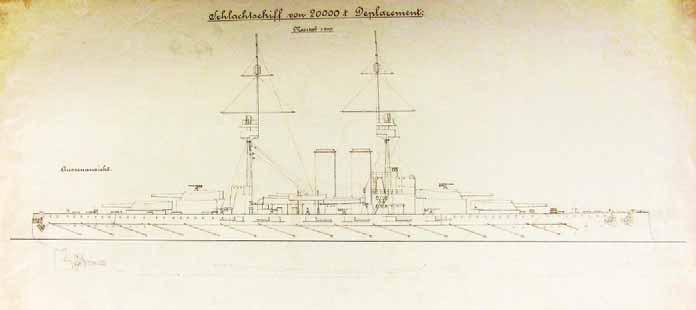The share of the Hungarian industry from the orders of the dreadnoughts (in million Kronen) IV
V
VI
VII
Hull&machinery
0.710
0.710
1.780
21.000
Armor
-
-
-
-
Armament
-
-
0.300
0.300
Propellant
3.710
3.710
3.710
3.710
Cartridge
1.010
1.010
1.010
1.010
Projectile
2.000
2.000
2.000
2.000
Fuze
0.300
0.300
0.300
0.300
Bursting charge
-
-
-
-
Electrical equip.
0.790
0.790
1.380
1.900
Magazines
0.750
0.750
0.750
1.500
Torpedo
0.620
0.620
0.620
0.620
Totals
9.890
9.890
11.850
32.340
February the Hungarian Delegation voted for the budget. Furthermore, the delegation voted for a resolution in which they gave the Marinekommandant vote of confidence, which was an unprecedented act in the history of the Hungarian delegation.195 The proposal of the naval budget was laid before the Austrian Delegation on 1 March. During the debate some members of the delegation questioned the need of the battleships and proposed to invest this money instead in railway lines. Other members questioned the fighting value of the battleships while some other members questioned the ability of the Danubius to build a battleship. On the next day the Austrian delegation voted in favor of the budget.196 The Construction of the Tegetthoff Class During the negotiations on the building at the industries’ own risk, coming to terms with the Škoda and the Witkowitz works was more important than with the STT because the determinant factors of the construction time of a battleship were the gun turrets and armor rather than the hull and machin-
ery. The task was challenging because the manufacturing of these items should take place over the same period (four years) as in the case of the Radetzky class even though the new battleships had 20,000 tons of armor instead of 11,000 tons and their gun turrets weighed 11,000 tons instead of 5,400 tons. In August 1909, the Marinesektion informed Škoda that for the new battleships it should manufacture sixteen triple turrets and forty-eight 30.5 cm guns and for the first unit it should deliver the complete armament in 1912. Montecuccoli requested Albert Rothschild, the owner of Witkowitz Ironworks, to increase his armor manufacturing capacity to 7,000 tons per year. Rothschild was ready to accomplish this expansion, but he made mention of some risks.197 During the negotiations the STT took the necessary steps for building the 20,000 ton battleships: the machinery shop was enlarged and the cranes of the two large slipways were heightened.198 On 29 November 1909, the Navy signed the contract with the STT on the building of the first two units (Schlachtschiff IV and V). The delivery times were thirty and thirty-six months.199 The price of the hull and the machinery of one unit were 14 and 7 million Kronen, the price of the complete
— 71 —






























